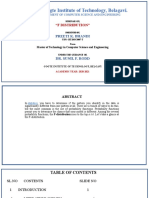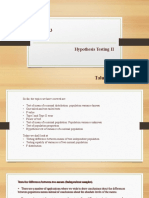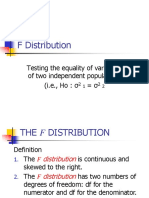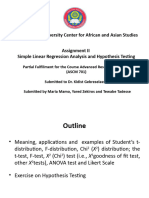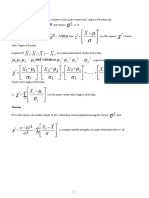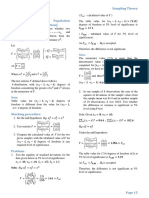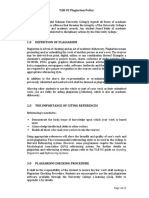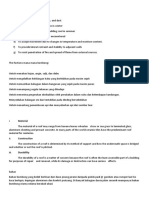0% found this document useful (0 votes)
42 views10 pagesF Distribution 9
The F-distribution, named after R.A. Fisher, is used to compare the variances of two populations and is defined as the ratio of their variances. It is characterized by degrees of freedom and has a probability density function that varies based on these degrees. Hypothesis testing for variance equality involves calculating the F statistic and comparing it to a critical value to determine if the null hypothesis can be rejected.
Uploaded by
Pung Kang QinCopyright
© © All Rights Reserved
We take content rights seriously. If you suspect this is your content, claim it here.
Available Formats
Download as PDF, TXT or read online on Scribd
0% found this document useful (0 votes)
42 views10 pagesF Distribution 9
The F-distribution, named after R.A. Fisher, is used to compare the variances of two populations and is defined as the ratio of their variances. It is characterized by degrees of freedom and has a probability density function that varies based on these degrees. Hypothesis testing for variance equality involves calculating the F statistic and comparing it to a critical value to determine if the null hypothesis can be rejected.
Uploaded by
Pung Kang QinCopyright
© © All Rights Reserved
We take content rights seriously. If you suspect this is your content, claim it here.
Available Formats
Download as PDF, TXT or read online on Scribd
/ 10

